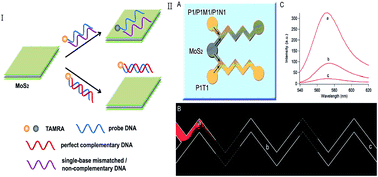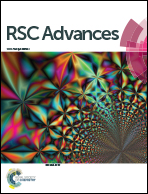MoS2-DNA and MoS2 based sensors
Abstract
MoS2, a family member of transition-metal dichalcogenides, has shown highly attractive superiority for detection arising from its unique physical and chemical properties. Coupling MoS2 with DNA recognition events leads to novel sensing platforms. Therefore, it has attracted increasing interest for MoS2 based sensors in the increasing demands of biomedical applications. This has led to its rapid development in field of sensor. This paper summarizes the key issues in the development of MoS2-DNA and MoS2 based sensors related to fluorescence resonance energy transfer (FRET), electrochemical biosensing, and field effect transistors (FET) biosensing for use in the detection of DNA, proteins, metal ions, and others. The detection mechanisms and the advantages of MoS2 are revealed. Future directions in which the field is likely to thrive and some critical challenges are also discussed.

- This article is part of the themed collection: 2017 Review articles


 Please wait while we load your content...
Please wait while we load your content...